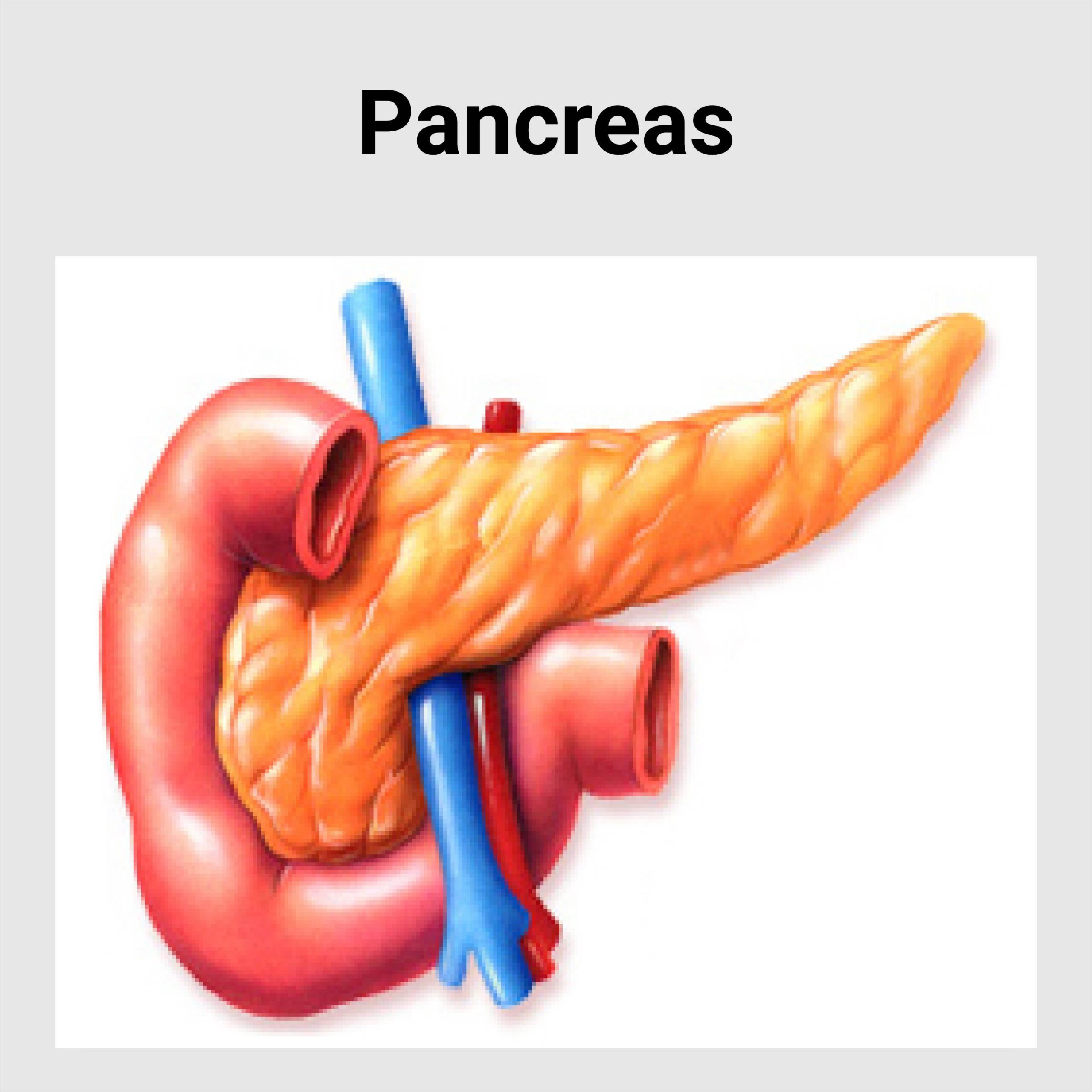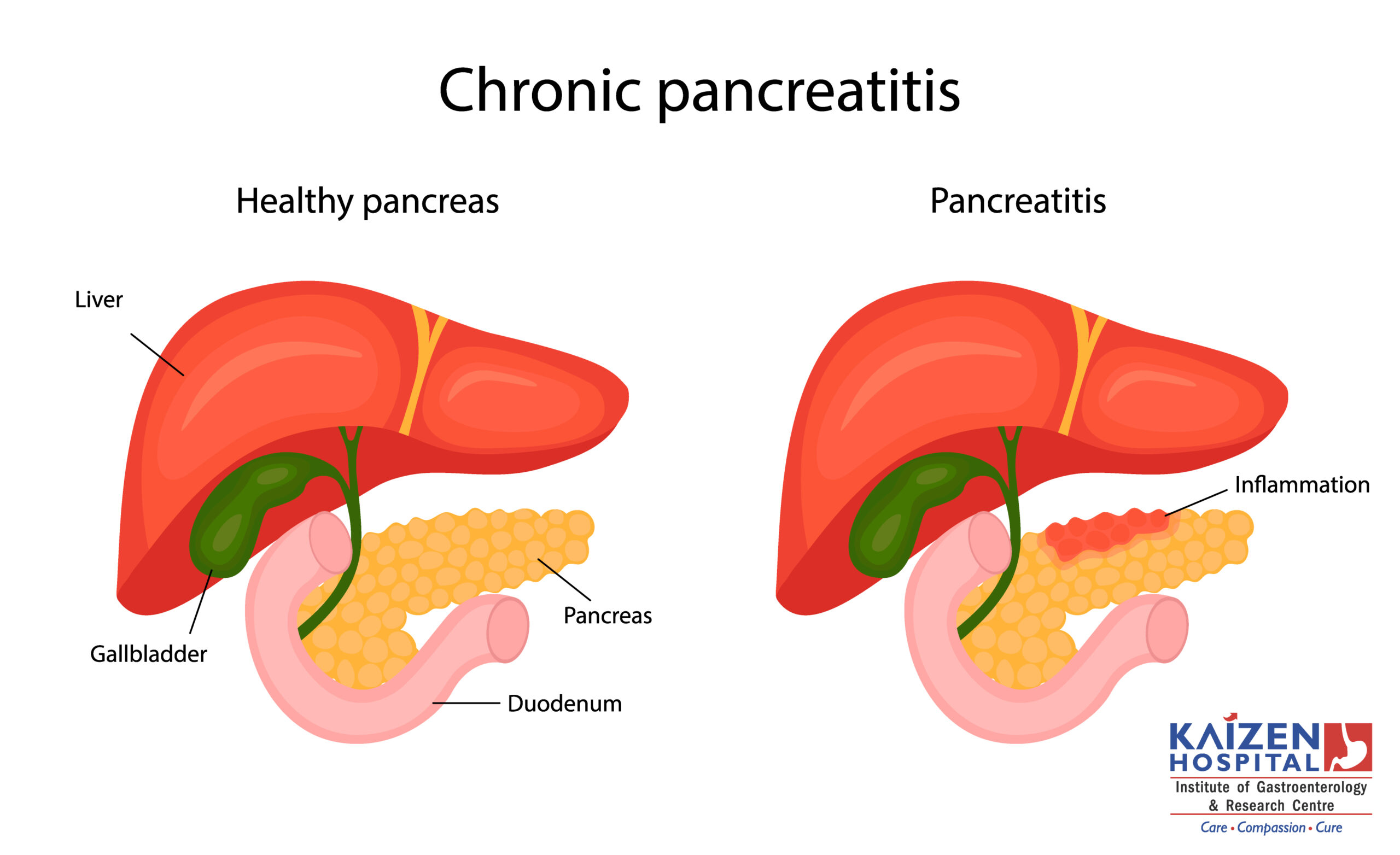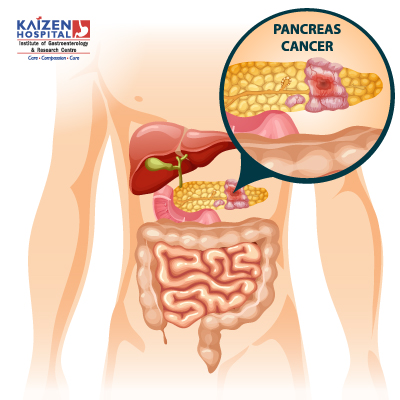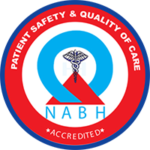Pancreas Disease

Pancreas is an organ situated in posterior aspect of the abdomen just above the level of umbilicus. It produces various substance having variety of functions in the body. It helps in digesting food, control the sugar level in the blood and other various functions.
Common Disease of Pancreas are:
- Acute Pancreatitis
- Chronic Pancreatitis
- Pancreatic Injury
- Cancer of Pancreas
- Periampullary Cancer
Acute Pancreatitis
Acute pancreatitis means a sudden inflammation of the pancreas.
Causes
- Alcohol
- Gallstones
- Hereditary
- Abdominal surgery
- Malnutrition
- Hypercalcaemia
- Hyperlipidaemia
- Hyperparathyroidism
- Abdominal trauma
- Certain medications
- Cigarette smoking
- Cystic fibrosis
- Post Endoscopic retrograde cholangiopancreatography (ERCP)
- Pancreatic cancer
- Autoimmune
Symptoms
- Severe upper abdominal pain radiating to the back, aggravated after meals
- Abdominal tenderness
- Nausea, Vomiting
- Fever with tachycardia
Diagnosis
- Serum Amylase, Serum Lipase
- Stool R/M
- Abdominal ultrasound to look for gallstones and pancreas inflammation
- Computerized tomography (CT) scan to look for gallstones and assess the extent of pancreas inflammation
- Endoscopic ultrasound (EUS) to look for inflammation and blockages in the pancreatic duct or bile duct
- Magnetic resonance imaging (MRI) to look for abnormalities in the gallbladder, pancreas and ducts
Treatment
- Hospitalization
- Keep Patient fasting. once pancreatitis is controlled, he can be started on clear liquids, bland food and gradually normal diet.
- IV fluids, IV analgesic.
- Treating the cause of pancreatitis.
- ERCP to remove bile duct obstructions
- Cholecystectomy in case og gall stones causing pancreatitis.
- Pancreatic Surgery in case of Pancreatic necrosis.
- Avoid alcohol consumption
Complications
- Pseudocyst
- Infection
- Diabetes
- Malnutrition
- Breathing problems
- Kidney failure
- Pancreatic cancer
Chronic Pancreatitis

Causes
- Heavy Alcohol for long time
- Gall Stones
- Hereditary disorders of the pancreas
- Cystic fibrosis
- High triglycerides
Symptoms
- Upper abdominal pain radiating to back
- Cachexia
- Steatorrhoea
Diagnosis
- Serum Amylase, Serum Lipase
- GTT
- Ultrasound,CT scan, and MRI
- ERCP to look at the pancreatic and bile ducts using X-rays
Treatment
- Analgesics
- Pancreatic enzymes
- Fat restricted diet
- Endoscopic procedures
- surgery
Pancreatic Injury
Symptoms
- Abdominal distention
- Epigastric tenderness
- Tachycardia
Diagnosis
- USG Abdomen
- CT Scan
- ERCP(Endoscopic Retrograde Cholangiopancreatography)
Treatment
- Surgery
Cancer of Pancreas

Pancreatic cancer is relatively uncommon. There are several types of pancreatic cancer, but more than 9 in 10 cases are ductal adenocarcinomas.
Ductal adenocarcinoma of the pancreas
This type of cancer develops from a cell which becomes cancerous in the pancreatic duct. This multiplies and a tumor then develops in and around the duct. As the tumor enlarges:
- It can block the bile duct or the main pancreatic duct. This stops the drainage of bile and/or pancreatic fluid into the duodenum.
- It invades deeper into the pancreas. In time it may pass through the wall of the pancreas and invade nearby organs such as the duodenum, stomach or liver.
- Some cells may break off into the lymph channels or bloodstream. The cancer may then spread to nearby lymph nodes or spread to other areas of the body (metastasis).
Other types of pancreatic cancer
There are some rare types of cancer which arise from other types of cells within the pancreas. For example, cells in the pancreas that make insulin or glucagon can become cancerous (insulinomas and glucagonomas). These behave differently to ductal adenocarcinoma. For example, they may produce too much insulin or glucagon, which can cause various symptoms.
What causes pancreatic cancer?
A cancerous tumor starts from one abnormal cell. The exact reason why a cell becomes cancerous is unclear. It is thought that something damages or alters certain genes in the cell. This makes the cell abnormal and multiplies out of control.
Many people develop cancer of the pancreas for no apparent reason. However, certain risk factors increase the chance that pancreatic cancer may develop. These include:
- Ageing: It is more common in older people. Most cases are in people aged over 60.
- Smoking
- Diet: Eating a diet high in fat and meat seems to increase the risk.
- Obesity
- Chronic pancreatitis: persistent inflammation of the pancreas. Most cases of chronic pancreatitis are due to drinking a lot of alcohol. There are other less common causes.
- Diabetes
- Chemicals: Heavy exposure at work to certain pesticides, dyes and chemicals used in metal refining may increase the risk.
Genetic and hereditary factors:
Most cases of pancreatic cancer do not run in families. However, some families have a higher incidence of pancreatic cancer than average. It is thought that about 1 in 10 pancreatic cancers are due to inheriting an abnormal gene. See your doctor if you are concerned that pancreatic cancer is common in your family. You may be offered screening tests with the aim of detecting pancreatic cancer at an early stage when the chance of a cure is high.
What are the symptoms of pancreatic cancer?
Symptoms of a blocked bile duct
In about 7 in 10 cases the tumor first develops in the head of the pancreas. A small tumor often causes no symptoms at first. As the tumor grows it tends to block the bile duct. This stops the flow of bile into the duodenum which leads to:
- Jaundice
- Dark urine – caused by the jaundiced blood being filtered by the kidneys
- Pale faeces – as the faeces contain no bile which causes their normal brown color
- Generalized itch caused by the bile in the bloodstream
Pain is often not a feature at first. Therefore a painless jaundice that becomes worse is often the first sign of pancreatic cancer. Nausea and vomiting are also fairly common symptoms.
Other symptoms
As the cancer grows in the pancreas, further symptoms that may develop include:
- Pain in the upper abdomen. Pain can also pass through to the back.
- You may feel generally unwell and lose weight. These symptoms are often the first to develop if the cancer develops in the body or tail of the pancreas (when the bile duct is not blocked).
- You may not digest food very well, as the amount of pancreatic fluid will be reduced. This can cause smelly pale faeces and weight loss.
- Rarely, diabetes develops if nearly all the pancreas is damaged by the tumor.
- Rarely, a tumor can trigger inflammation of the pancreas – acute pancreatitis. This can cause severe abdominal pain.
If the cancer spreads to other parts of the body, various other symptoms can develop.
How is pancreatic cancer diagnosed and assessed?
Initial assessment
There are many causes of jaundice and of the other symptoms listed above. For example, a blocked gallstone or hepatitis (liver inflammation). Therefore, some initial tests are usually arranged if you develop jaundice or the other symptoms listed above. Typically, these include an ultrasound scan of the abdomen and various blood tests. These initial tests can usually give a good idea if the cause of jaundice is a blockage from the head of the pancreas.
Assessing the extent and spread
If you are confirmed to have pancreatic cancer, or it is strongly suspected from the initial tests, then further tests may be done to assess if it has spread. For example:
- A CT scan (computerised tomography) is a commonly used test to assess pancreatic cancer. It is a specialised X-ray test that can give quite clear pictures of the inside of your body.
- An MRI scan is sometimes done. MRI stands for magnetic resonance imaging. An MRI scan uses a strong magnetic field and radio waves to create computer pictures of tissues, organs and other structures inside your body.
- An endoscopic ultrasound (EUS). An endoscope (gastroscope) is a thin, flexible, telescope. It is passed through the mouth, into the esophagus and stomach and on into the duodenum. The endoscope contains fiber optic channels which allow light to shine down so the doctor or nurse can see inside. Some endoscopes are fitted with a tiny ultrasound scanner at their tip, which can obtain pictures of structures behind the gut, such as the pancreas.
- Chest X-ray
- Laparoscopy This is a procedure to look inside your abdomen by using a laparoscope. A laparoscope is like a thin telescope with a light source. It is used to light up and magnify the structures inside the abdomen. A laparoscope is passed into the abdomen through a small incision (cut) in the skin.
Biopsy
A biopsy is when a small sample of tissue is removed from a part of the body. The sample is then examined under the microscope to look for abnormal cells. If a biopsy is thought to be needed then one way to get a sample from the pancreas is to take the biopsy sample when you have an endoscopy. This is done by passing a thin grabbing instrument down a side channel of the endoscope. Alternatively, sometimes a biopsy is done at the same time as having a scan. It can take two weeks for the result of a biopsy.
What are the treatment options for pancreatic cancer?
Treatment options that may be considered include surgery, chemotherapy and radiotherapy. The treatment advised for each case depends on various factors such as the stage of the cancer (how large the cancer is and whether it has spread), and your general health.
Surgery
If the cancer is at an early stage, then there is a modest chance that surgery can be curative. (An early stage means a small tumor which is confined within the pancreas and has not spread to the lymph nodes or other areas of the body).
- If the tumor is in the head of the pancreas then an operation to remove the head of the pancreas may be an option. This is a long and involved operation, as the surrounding structures such as the duodenum, stomach, bile duct, etc, need to be rearranged once the head of the pancreas is removed.
- If the tumor is in the body or tail of the pancreas then removal of the affected section of the pancreas is sometimes an option.
The reason why the chance of cure is only modest is because in a number of cases thought to be in an early stage, some cells have already spread to other parts of the body but are not yet detectable by scans or other staging tests. In time they grow into secondary tumors.
If the cancer is at a later stage then surgery is not an option to cure the disease. Some surgical techniques may still have a place to ease symptoms. For example, it may be possible to ease jaundice caused by a blocked bile duct. A bypass procedure may be used, or a stent may be inserted into the bile duct. (A stent is a small rigid tube made of plastic or metal which aims to keep a duct or channel open. It is usually inserted by instruments attached to an endoscope.)
Chemotherapy
Chemotherapy is a treatment of cancer by using anti-cancer medicines which kill cancer cells or stops them from multiplying. When chemotherapy is used in addition to surgery it is known as adjuvant chemotherapy. For example, following surgery you may be given a course of chemotherapy. This aims to kill any cancer cells which may have spread away from the primary tumor.
Radiotherapy
Radiotherapy is a treatment which uses high-energy beams of radiation which are focused on cancerous tissue. This kills cancer cells, or stops cancer cells from multiplying. See separate leaflet called Radiotherapy for more details. Radiotherapy is not commonly used to treat pancreatic cancer.
What is the prognosis?
If a pancreatic cancer is diagnosed and treated at an early stage then there is a modest chance of a cure with surgery. As a rule, the smaller the tumor, and the earlier the tumor is diagnosed, the better the outlook. Some tumors which develop in the head of the pancreas are diagnosed very early, as they block the bile duct and cause jaundice fairly early on. This obvious symptom is then investigated and surgery to remove a small tumor may be curative.
However, most pancreatic cancers are advanced before they cause symptoms and are diagnosed. A cure is unlikely in most cases. However, treatment may slow down the progression of the cancer.
Periampullary Cancer
Causes
- Genetics, bile duct diseases,
Symptoms
- Intermittent or persistent jaundice
- Abdominal pain
- Backache
- Acute Pancreatitis
- Nausea, vomiting
- Pruritus
- Anorexia
- Cachexia
- Anaemia
- Fever
- Diarrhoea
Diagnosis
- CBC
- CEA, CA 19-9
- LFT
- Urine R/M
- USG Abdomen
- CT Scan
- EUS with biopsy
- MRCP (Magnetic Resonance Cholangiopancreatography)
- Chest X Ray
Treatment
- Surgery – Whipple procedure in case of large tumour – the lower half of the stomach, gallbladder, distal common bile duct, head of the pancreas, the upper parts of the small intestines and regional lymph nodes are removed. The remaining part of the stomach, biliary tree, and pancreas are attached to the cut end of the small intestine.
- Biliary stentsmay be placed endoscopically or through a skin incision to relieve the jaundice caused due to obstruction following the cancer.
HOSPITAL ADDRESS
132ft. Ring Road, Helmet Circle, Memnagar, Ahmedabad – 380052. Gujarat, India.
EMERGENCY( 24X7 )
Mobile: +91 – 99047 44410
Help Line : +91 – 98244 40044
+91 – 79 – 2791 4444
E-MAIL ADDRESS
contact@xdemo.app
WHY KAIZEN ?
With a vision to extend World Class healthcare solutions to the community through advances in medical technology, medical research and by adopting best man power management practices , Kaizen hospital was established in Ahmedabad in 2011.

